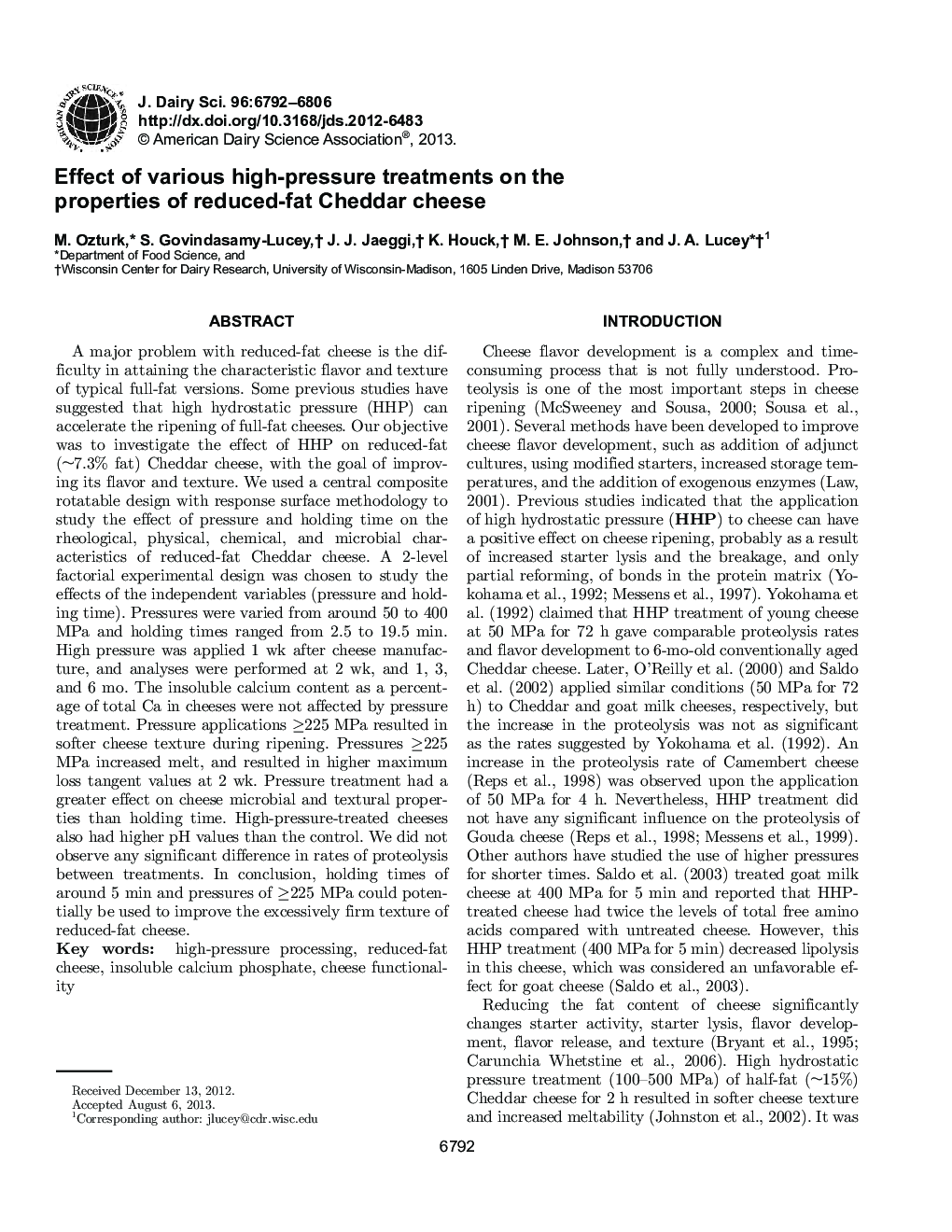| Article ID | Journal | Published Year | Pages | File Type |
|---|---|---|---|---|
| 10974981 | Journal of Dairy Science | 2013 | 15 Pages |
Abstract
A major problem with reduced-fat cheese is the difficulty in attaining the characteristic flavor and texture of typical full-fat versions. Some previous studies have suggested that high hydrostatic pressure (HHP) can accelerate the ripening of full-fat cheeses. Our objective was to investigate the effect of HHP on reduced-fat (~7.3% fat) Cheddar cheese, with the goal of improving its flavor and texture. We used a central composite rotatable design with response surface methodology to study the effect of pressure and holding time on the rheological, physical, chemical, and microbial characteristics of reduced-fat Cheddar cheese. A 2-level factorial experimental design was chosen to study the effects of the independent variables (pressure and holding time). Pressures were varied from around 50 to 400 MPa and holding times ranged from 2.5 to 19.5 min. High pressure was applied 1 wk after cheese manufacture, and analyses were performed at 2 wk, and 1, 3, and 6 mo. The insoluble calcium content as a percentage of total Ca in cheeses were not affected by pressure treatment. Pressure applications â¥225 MPa resulted in softer cheese texture during ripening. Pressures â¥225 MPa increased melt, and resulted in higher maximum loss tangent values at 2 wk. Pressure treatment had a greater effect on cheese microbial and textural properties than holding time. High-pressure-treated cheeses also had higher pH values than the control. We did not observe any significant difference in rates of proteolysis between treatments. In conclusion, holding times of around 5 min and pressures of â¥225 MPa could potentially be used to improve the excessively firm texture of reduced-fat cheese.
Related Topics
Life Sciences
Agricultural and Biological Sciences
Animal Science and Zoology
Authors
M. Ozturk, S. Govindasamy-Lucey, J.J. Jaeggi, K. Houck, M.E. Johnson, J.A. Lucey,
